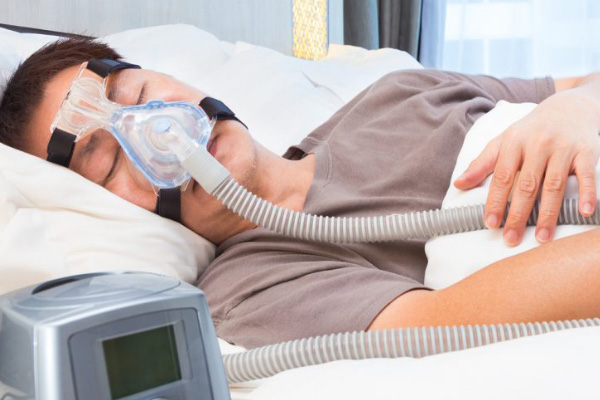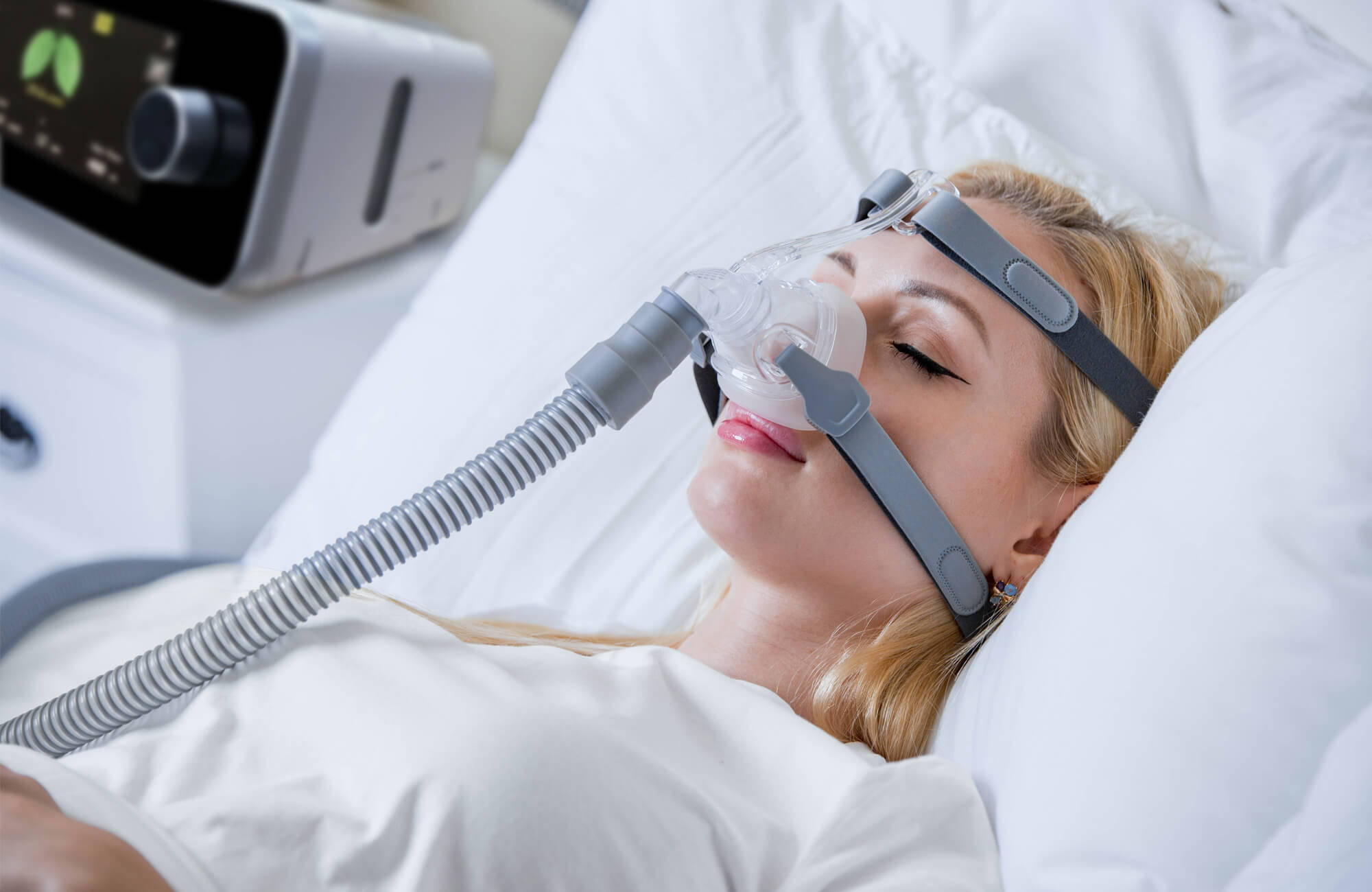Bipap vs. CPAP: Which Is the Ideal for Your Sleep Condition?
When browsing the intricacies of rest disorders, the selection between BiPAP and CPAP therapy is an important factor to consider. Each method provides unique advantages tailored to specific problems, yet the decision rests on individual patient requirements and comfort degrees. While CPAP gives a steady airflow ideal for obstructive sleep apnea, BiPAP's double stress setups might boost comfort for those with even more elaborate respiratory problems. Comprehending these differences can substantially impact therapy efficiency, leaving one to ponder which alternative really aligns with their health and wellness needs and way of life.
Recognizing Sleep Disorders
Sleep conditions include a variety of conditions that interfere with regular sleep patterns, influencing both the high quality and period of remainder. These disorders can show up in numerous types, consisting of insomnia, rest apnea, narcolepsy, troubled leg disorder, and parasomnias. Each problem offers unique obstacles, commonly causing substantial daytime exhaustion, cognitive disability, and psychological disruptions.
Sleeping disorders is defined by problem falling or remaining asleep, while rest apnea involves duplicated disruptions in breathing during sleep, typically resulting in fragmented remainder. Narcolepsy, on the other hand, is noted by excessive daytime sleepiness and abrupt rest strikes. Uneasy leg syndrome creates uncomfortable experiences in the legs, prompting an unmanageable impulse to move them, which can likewise hinder the capacity to sleep.
The influence of sleep problems extends past specific wellness, affecting total productivity, relationships, and quality of life. Recognizing the specific nature of each disorder is critical for efficient diagnosis and treatment. As rest health and wellness becomes increasingly acknowledged as a crucial element of total well-being, attending to these conditions is crucial for boosting both sleep top quality and day-to-day performance.
Just How CPAP Works
Continual Positive Airway Pressure (CPAP) treatment is frequently used as a key treatment for obstructive rest apnea (OSA) The mechanism of CPAP entails the usage of a device that provides a consistent stream of air with a mask put on throughout sleep. This airflow preserves positive stress in the respiratory tract, preventing the collapse or obstruction of the throat that can occur throughout sleep.
When a person inhales, the CPAP equipment gives a constant circulation of air, making certain that the respiratory tract remains open - BiPAP Rental. This not only alleviates the symptoms of OSA, such as snoring and interrupted rest patterns, however likewise decreases the associated health and wellness threats, including cardio complications and daytime tiredness
The stress settings on a CPAP device can be tailored to meet individual client requirements, frequently determined through a sleep study. People usually undergo titration research studies to find the optimal stress level for their distinct condition. Routine follow-up and changes might be needed to make certain performance and convenience. Generally, CPAP treatment has been shown to significantly enhance the quality of rest and overall health and wellness for people experiencing obstructive rest apnea.
Exactly How BiPAP Works
BiPAP, or Bilevel Favorable Airway Stress, is a customized kind of non-invasive air flow that is particularly useful for patients with problems such as intricate sleep apnea or respiratory disorders. Unlike CPAP, which delivers a continual stream of air at a solitary pressure, BiPAP offers 2 distinctive pressure settings: a greater inspiratory pressure read the article for inhalation and a reduced expiratory pressure for exhalation. This dual-pressure technique permits much easier breathing, reducing the effort required throughout exhalation.
The gadget operates via a mask fitted over the nose or mouth, connected to an equipment that generates atmospheric pressure. When the individual breathes in, the equipment provides the higher pressure to assist with airflow, making sure that the air passage stays open. Upon exhalation, the equipment instantly lowers the stress, making it a lot more comfortable for the individual to take a breath out.

Secret Differences Between BiPAP and CPAP

On the other hand, BiPAP (Bilevel Positive Air passage Stress) provides 2 various pressure settings: one for inhalation and a reduced one for exhalation. This dual pressure system enables even more comfy breathing, especially for people who fight with exhaling against a continual pressure. BiPAP is commonly recommended for clients with complicated sleep apnea, chronic obstructive pulmonary illness (COPD), or those that require added support during sleep.
Furthermore, the intricacy of BiPAP tools typically leads to a higher cost and requires a lot more cautious titration than CPAP. BiPAP Rental. Recognizing these vital distinctions can assist in identifying which tool might be better for details rest problems, establishing the groundwork for educated treatment decisions
Choosing the Right Treatment
Just how can one establish one of the most ideal treatment for handling sleep conditions? The decision between BiPAP and CPAP therapy mostly rests on the original site particular characteristics of the rest condition, the patient's general health and wellness, and their comfort with the tool. CPAP, which delivers a continual stream of air, is generally suggested for obstructive sleep apnea (OSA) It maintains an open respiratory tract throughout sleep, efficiently avoiding apneas and hypopneas.
Conversely, BiPAP offers two levels of pressure: one for breathing and a lower one for exhalation. This twin stress system is helpful for people with complex rest apnea or those who experience difficulty exhaling versus a constant pressure. Furthermore, BiPAP is often suggested for people with respiratory system conditions, such as persistent obstructive lung illness (COPD), where varying pressure settings can improve comfort and compliance.
Eventually, a comprehensive evaluation by a rest specialist, consisting of a rest research study, can assist establish which basics treatment lines up ideal with the individual's demands. Elements such as convenience, simplicity of usage, and certain clinical conditions need to additionally be taken right into factor to consider to optimize therapy results.
Verdict
In recap, both BiPAP and CPAP serve distinctive functions in the administration of sleep disorders. CPAP works for obstructive sleep apnea through regular airflow, while BiPAP uses dual stress setups that enhance comfort for those with complicated rest apnea or breathing problems. The choice between these therapies ought to be led by individual demands and problems, requiring a comprehensive examination by a rest professional to ensure ideal therapy end results and improved quality of sleep.

On the whole, CPAP therapy has been revealed to dramatically improve the quality of rest and overall health and wellness for individuals suffering from obstructive sleep apnea.
BiPAP is frequently advised for individuals with complex rest apnea, chronic obstructive pulmonary condition (COPD), or those who require added assistance during sleep.
CPAP is effective for obstructive rest apnea with regular air flow, while BiPAP offers twin pressure settings that boost comfort for those with intricate rest apnea or breathing issues.